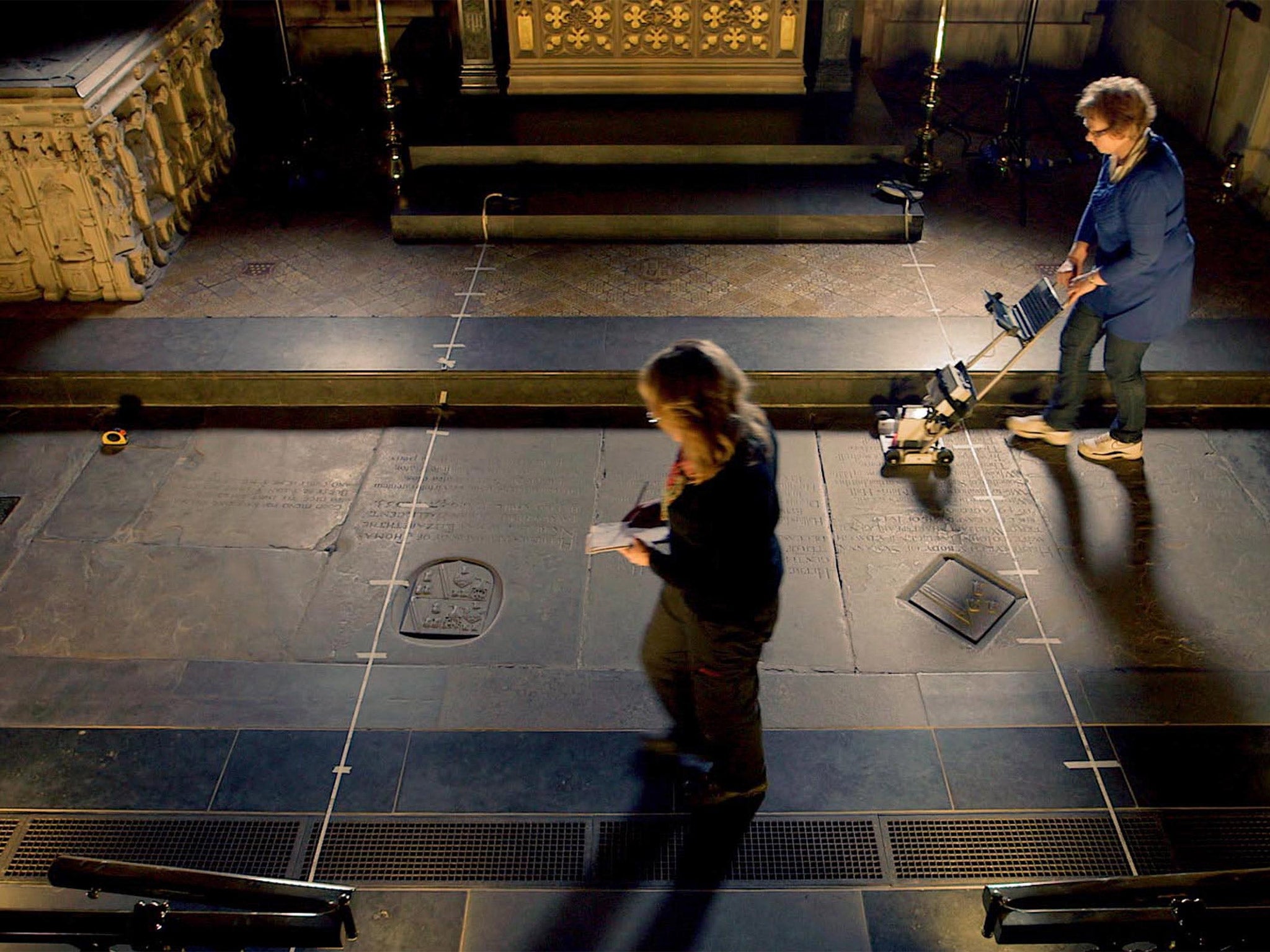Shakespeare's skull 'missing' from his grave, new examination finds
Shakespeare’s skull could still be at large somewhere

More than 250 years after Shakespeare’s death, a story began to circulate that his skull had been stolen from his grave in Stratford-upon-Avon by trophy hunters.
For more than a century the tale was widely dismissed as a myth; but now, on the 400th anniversary of Shakespeare’s death, archaeologists believe they have found evidence to support the claims.
Using ground-penetrating radar to scan the grave reputed to be Shakespeare’s, they have discovered that the skull is apparently absent from the rest of the skeleton.
They also established that a skull in a church in Beoley, 20 miles away, which according to local legend belonged to the Bard, was in fact that of a 77-year-old woman. This means, they said, that Shakespeare’s skull could still be at large somewhere.
Their findings will be presented in the documentary Secret History: Shakespeare’s Tomb, which airs on Channel 4 on Saturday.
Shakespeare died in 1616 and his grave is believed to be in Holy Trinity Church in Stratford-upon-Avon. It is not marked with his name, but is covered by a stone inscribed with a curse to ward off anyone moving the remains. Members of his family, including wife Anne Hathaway, are in marked graves close by.
Kevin Colls, an archaeologist from Staffordshire University, and Erica Utsi, a geophysicist who has worked in Westminster Abbey, led the scanning project.
Mr Colls said: “With the developments of radar and geophysical techniques and what you can do with laser scanning technology, the church realised they could answer many questions about what’s beneath those stones without digging them up.”
The scan showed evidence of a “mysterious and significant repair” to the grave, Mr Colls said, giving credence to a story published in Argosy magazine in 1879. According to this, a group of trophy hunters led by a Dr Frank Chambers had lifted the stone, dug up the grave and stolen Shakespeare’s skull.
Mr Colls said: “The scan suggests something going on around the head. It led us to suggest that the area has been disturbed.”
The technology cannot identify bones, he said, but it shows half the grave has not been disturbed. “We are confident his remains are there.”
He added that the data “suggests the skull is still missing and is out there somewhere. There’s no documentary trail we’ve identified of where it might be. We will keep looking.”
The Rev Patrick Taylor of Holy Trinity Stratford said: “We now know much more about how Shakespeare was buried. We are not convinced, however, that there is sufficient evidence to conclude that his skull has been taken.”
Subscribe to Independent Premium to bookmark this article
Want to bookmark your favourite articles and stories to read or reference later? Start your Independent Premium subscription today.

Join our commenting forum
Join thought-provoking conversations, follow other Independent readers and see their replies